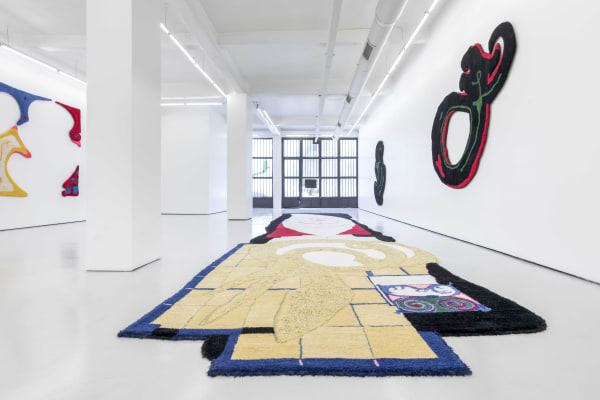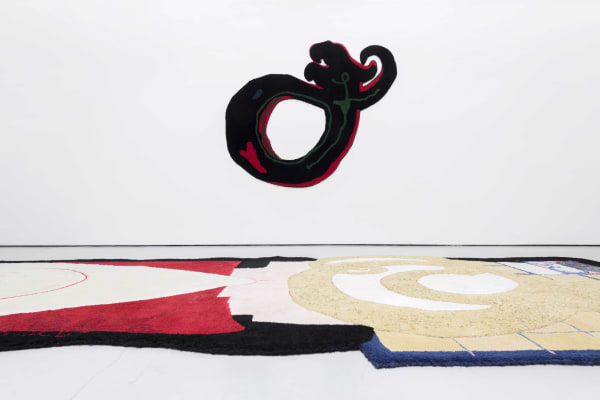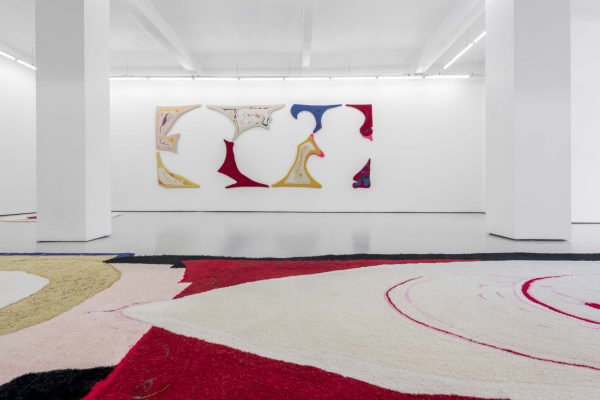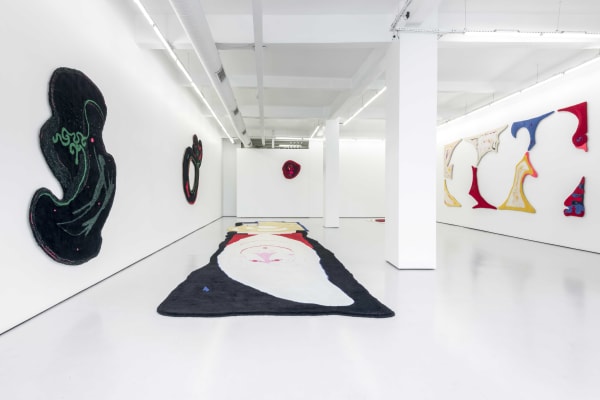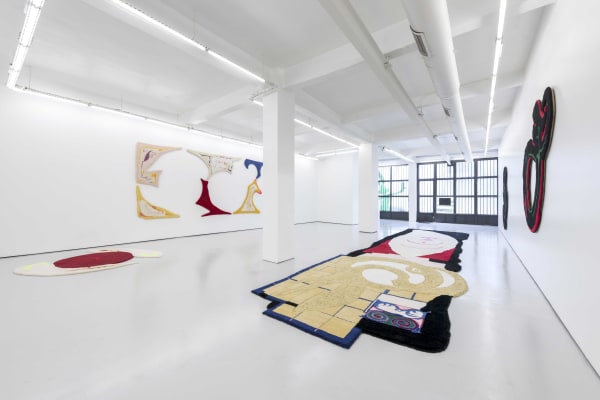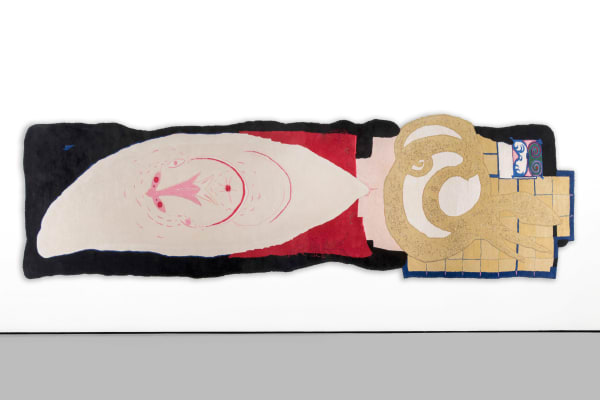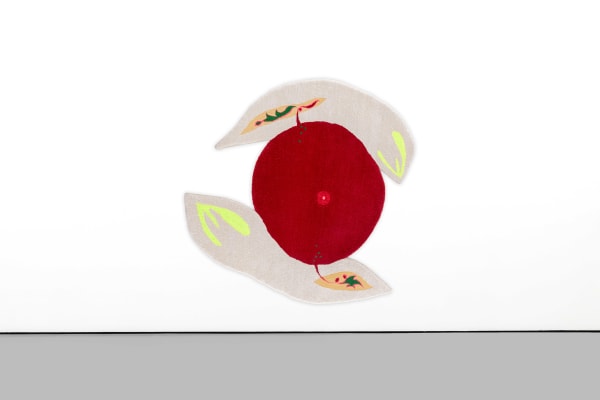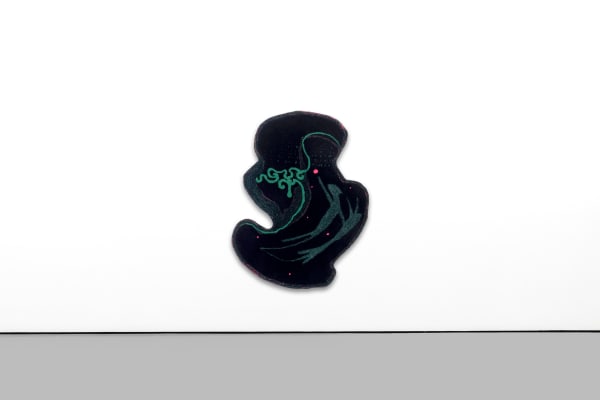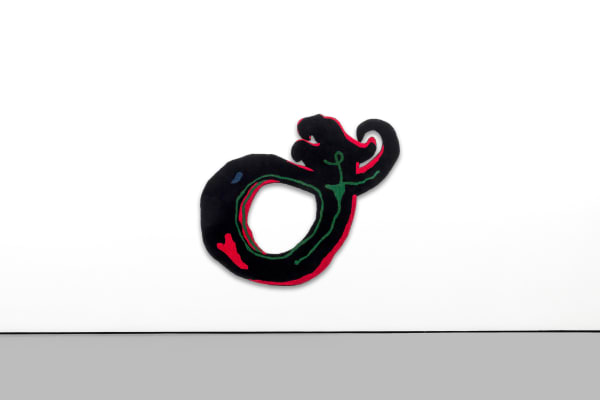Sleeping With Ghosts: Lux Miranda
Past exhibition
Press release
Lucie Lux-Miranda’s rugs are rich with expansive energy. Each one, or rather each group of them, exceeds and overwhelms us, just as they drown us in and absorb us. At first, we take this as the accomplishment of an aesthetic strategy: previously working with drawing and sculpture, the artist switched to weaving two years ago. Through wool’s materiality, the practice enriches her colors with a vibratory quality, while its versatile flatness negotiates volume’s overwhelming triumphalism – her rugs can be shown hung on the wall as well as lying flat on the ground. What draws us to them in the first place is their bodily presence, which transforms a merely visual perception – a face-to-face, rational experience – into a fully haptic, subjective encounter.
About weaving, Lucie Lux-Miranda underlines how she values the physical part that it entails. Her large-scale formats, such as Sleeping with ghosts (2020), a twelve-part composition, or EQUINOXE-X (2012), which is ten meters long, involve the artist’s body just as much as the spectator’s. Similarly, the rugs’ patterns derive as much from a project than a process. Originating from a vocabulary of shapes and symbols gathered by the artist, their materialization on the tapestry, a repetitive activity not unlike meditation, infuses them with a blossoming energy. As such, the work’s vital vibrancy as a whole, as well as the cultural and symbolic ambiguity of its parts, bring up yet another dimension.
As we encounter her tumultuous universes, studded with nascent figures still hidden in the folds of potentiality, we feel slightly dizzy. It is as if we were gazing into a vast abyss about to reveal itself: nothing there is fixed for good. Lux-Miranda’s compositions are polycentric, and their elements are yet to be born. Rather than a finite cosmos, the works bring forth a perpetually reconfiguring energetic field. As such, our aesthetic approach also induces an anthropological one: a way of relating to the world by surrendering to it rather than trying to decipher it. On the surface of the artist’s rugs, something becomes visible which true nature remains uncertain; something that whispers to the senses while staying cautious not to be named, captured or reified.
Since a few years already, philosophical and anthropological theory has adopted the lexical field of weaving as a scheme to undo former binary hierarchies. At the crossing of ecological and cybernetic investigations, the world and its entities, human and non-human, material and immaterial, thus emerge anew through networks and rhizomes, knots and entanglements. In a similar manner, Lux-Miranda’s serpentine lines tie back up suppressed alliances between art and craftsmanship, the eye and the hand, but also science and intuition, concept and imagination. In this respect, the unborn creatures dwelling in her ecosystems are akin to those favored by thinkers to represent their speculative worlds.
Combining human, animal and machinic reigns, as well as natural, scientific and technical fields, Donna Haraway’s cyborg or Vilém Flusser’s vampire squid from hell (Vampyroteuthis infernalis) play the role of intercessors on the path to a fluid reconciliation of modernity’s polarities. As we grow accustomed to Lux-Miranda’s work, we gradually start to identify outlines of snakes, dragons or chimeras in them: those are the ones which, to quote anthropologist Tim Ingold’s 2013 essay Walking with Dragons, inhabit “the rupture between reality and imagination”. However, in order to perceive those nascent, fanciful creatures, we must ourselves unlearn an inherited and instinctively adopted rationality, the one which still guides our steps and defines our perceptual apparatus.
Lucie Lux-Miranda’s compositions are the first encounter with the post-rational dragon. Her rugs, insofar as they call for losing oneself in the physical world’s folds, for plunging further into its depth and for roaming among its intricate folds and creases, reconnect us with a forgotten part of ourselves numbed by social life and predefined thought-patterns. Only by responding to this call and through it becoming one with the chimeric assemblages that populate the world’s interstitial spaces will we be guided towards a new sensory ecology and its intrinsic promise of more intensely vibrant worlds.
Ingrid Luquet-Gad — Writer and Art Critic
Installation Views
Works
Exhibition Text


